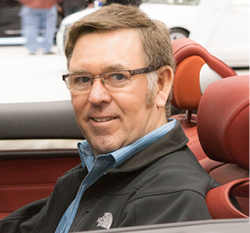Across more than four decades in pro audio, Mick Whelan has worn a substantial number of different hats: mix engineer for Paladin, The Sweet, and Manfred Mann’s Earth Band; Martin Audio’s first employee; sound designer and systems operator for Robin Trower, the Beach Boys and Carole King (to name just a few); executive for some of the top manufacturers in the industry … and many more.
Now, the tireless 63-years-young native of the UK has taken on his latest challenge as director of U.S. operations for Adamson Systems Engineering. “I first met (company CEO) Brock Adamson in the mid 1980s when I was designing systems in California,” Whelan says. “He’s always way ahead of the curve in many areas.”
So several months ago, when a mutual acquaintance mentioned there might be an opportunity to work with Adamson, he was intrigued. “Brock and I got to talking and thought our skills and philosophies would be compatible, so we made it happen.”
Officially coming aboard this past April, Whelan is focused on increasing the company’s visibility in the U.S., noting that Adamson Systems’ vision, technologies and outlook fit well with his core belief that the imagination of those he works with is integral to creating solutions that will help everyone – clients of all descriptions and the company itself – progress.
The willingness to be responsive to the ideas of others has been an integral part of his own success. “The day I stop stop learning or contributing, I’ll give up,” he states emphatically, adding that in his view, being open to learning is one of the prime drivers for success in pro audio specifically and the entertainment business in general.
“I’ve been really fortunate in that I’ve been able to listen to a lot of great ideas,” Whelan notes, citing as an example a conversation he had with Lars Brogaard, front of house engineer for Rod Stewart. “One day Lars told me that he wanted to hang a full PA with zero ground support. We take that for granted today, it’s common, but in the 70s and 80’s, it wasn’t.
“Lars saw that doing so would make for better sightlines as well as make more seats available, leading to more revenue. Others had flown horns before, but I worked with his idea and came up with what I’d say was the first full-range front fill that flew from the main PA.”
Healthy Respect
While he’s learned a lot of valuable lessons throughout his career, Whelan also admits there are a few he would prefer not to have to re-learn. As an example, he recalls the project he took on after first becoming interested in audio at the age of eight while growing up in Coventry, England. It enhanced his interest but also inspired a focus on life safety going forward.
“I had this tube radio, which I think was given to me because the tuner was broken,” he explains. “I’d added an extension loudspeaker to it and then proceeded to place external loudspeakers in our ventilation vents that probably caused all sorts of mold in the house, but they sounded really cool. To tune the radio I had to put my hand inside it and rotate this massive variable capacitor.
“Well, I was tuning it one day and, all of a sudden, I got a shock. It was like a hand grabbing my hand from inside the flipping radio and not letting me go. Fortunately, I was able to pull the plug with my other hand, but afterwards I had a healthy respect for everything thermionic.”















